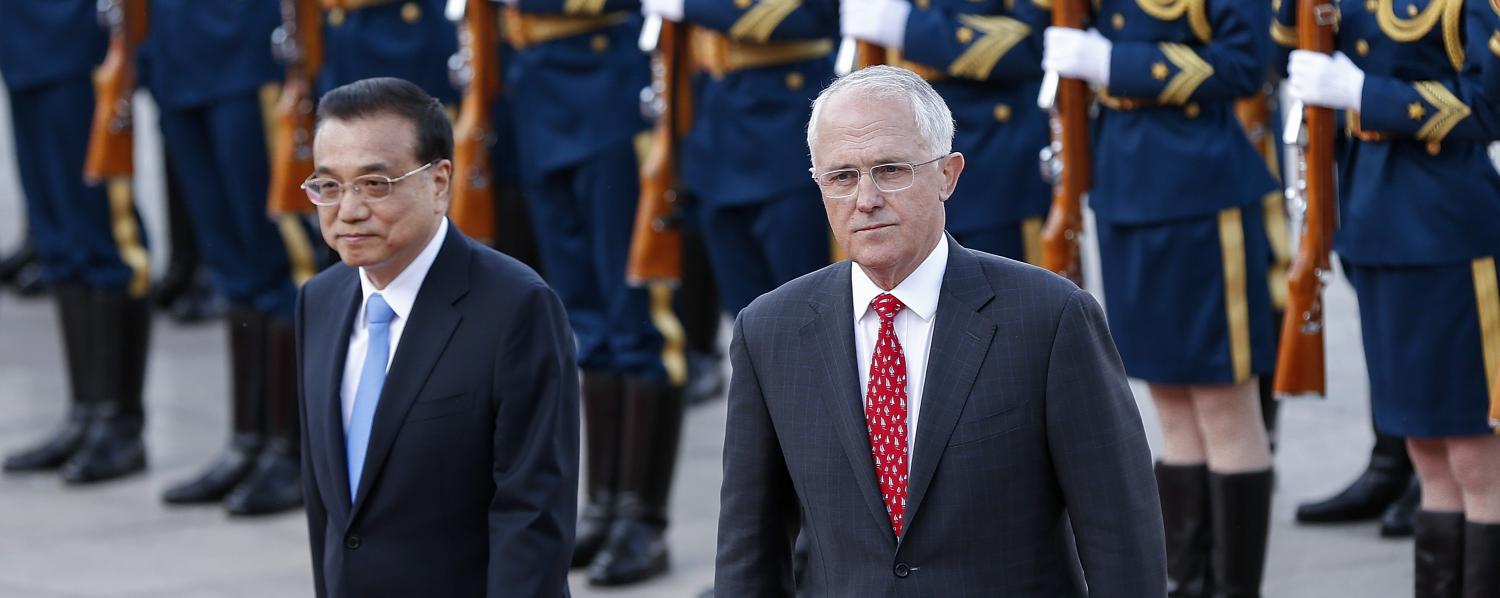Australia is in the midst of a vociferous debate over China. Reporting and commentary on Chinese Party-state sway over Australia's public and political institutions has been met by a strong pushback by those who emphasise the opportunities presented by China's influence. The debate is important and overdue in itself, and is a rare expression of dissent within Australia's policymaking elites. However, it has also demonstrated how important aspects of Australia-China relations are misunderstood in public institutions.
References in the national media to Australia's One-China Policy were particularly startling. After Chinese international students criticised a University of Newcastle lecturer for referring to Taiwan as a country, some commentators defended the students' behaviour on the grounds that they were simply reiterating Australia's One-China Policy, which is that Taiwan is a part of China.
However, that is not Australia's One-China Policy. The basis of the policy is the 1972 Communique between the Commonwealth and the People's Republic of China, which states:
The Australian Government recognizes the Government of the People's Republic of China as the sole legal Government of China, acknowledges the position of the Chinese Government that Taiwan is a province of the People's Republic of China, and has decided to remove its official representation from Taiwan before January 25, 1973.
In the words 'recognizes' and 'acknowledges', the Communique introduced a deliberate ambiguity that alludes to a broader understanding of the meaning of China than just the People's Republic of China. Taiwan's identity as the Republic of China can be encompassed by this understanding even as Australia clearly stated that it no longer recognised the Republic of China as a state in the international system.
This statement created a flexible, secure and enduring basis for relations with both Beijing and Taipei that has aligned with shifts in cross-straits relations. Beijing itself deployed contending meanings of China in 1979 in the post-Mao period, when the National People's Congress issued the Letter to Taiwan Compatriots. It replaced the 1954 policy of a military 'liberation' of Taiwan with one of party-state engagement between Communist China and Nationalist (KMT) China that mobilised their intertwined histories – Zhou Enlai was, after all, a member of the KMT in the 1920s.
Beijing and the KMT government that held power in democratic Taiwan from 2008 to 2016 applied the same approach to the meaning of China in their shared formula, the 1992 Consensus. This holds that both sides agree that there is one China, but that they agree to set aside differences in their respective definitions of China.
Australia's One-China Policy is more than just the 1972 Communique, however. Since then, it has been explicitly enunciated by Commonwealth governments, and a highly codified language around relations with Taiwan has been strictly observed. This is because in the Chinese world, steeped in the philosophical and political legacies of Confucianism, there is a distinctive understanding of the relationship between language and power and of the way language is constitutive of political realities. To state that we abide by a One-China Policy, including the finesse we bring to the meaning of 'China', is an action that creates a political reality. It demonstrates that we accept the complex, multi-dimensional and historically-situated relationship between Beijing and Taipei as that reality.
The legacy of Confucianism is why Beijing is so acutely sensitive to the language that is used with respect to Taiwan. For Beijing, any vocabulary that implies that Taiwan is a nation-state in the international system has the potential to be constitutive of a different political reality, one that would ultimately undermine the historical legitimacy of the PRC party-state.
For Australian policymakers and analysts in our national institutions, Australia's One-China Policy requires a familiarity with China's modern and classical history. For example, when a few years ago a Tasmanian state government official shouted down the phone at me, 'Look, the One-China Policy says that Taiwan is part of China, OK?' (thus reducing language itself to merely crude empiricism), he was demonstrating that not only did he not understand Australia's One-China Policy, but that he did not understand China, either.
The current national debate has made the long-standing failure of our public institutions to properly understand our relationship with China very visible. Hopefully this debate will produce the much more robust foundations we need to successfully manage the relationship in the future.

